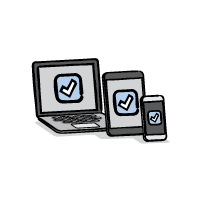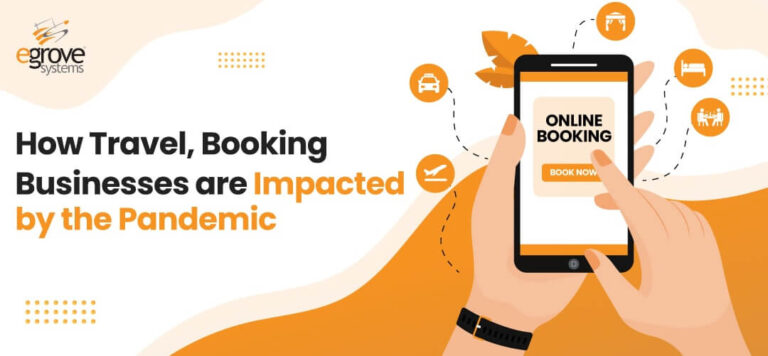Native Development
Mobile app development companies traditionally maintained multiple teams when developing native mobile apps to be deployed on iOS and Android. Every time an update was required, both the iOS and Android teams worked simultaneously on their respective codes to roll out the updates. This not only increased the team sizes but also the time to reach the market. The market pondered and brought in the hybrid warriors to tackle this. I meant the hybrid mobile application development frameworks. They seemed to do a fairly decent job. But they weren’t truly native. They were just wrapping CSS, HTML, and JavaScript code depending upon the platform of the device. They created web views instead of using the platform’s native UI framework. Small applications worked fine but were slower than native apps with similar functionality.
Write once. Deploy Everywhere.

React Native arrived to address them and has dominated the cross-platform application development market until now. They started with the tag ‘Learn Once. Write Everywhere.’ and are ‘Write Once. Run Everywhere’ now. But, React Native requires the javascript layer to communicate with the native UI components. Some platform specific mobile app components cannot be written in javascript and again crops the need for some amount of native android and iOS application development knowledge. But the main sore points are Stability and Performance. Apps with calculation intensive tasks suffer. UI and Animation aren’t React Native’s strong points either. AirBnb and Udacity scrapped React Native in 2018, citing device specific issues and performance issues among others. They were frustrated with React Native’s non backwards compatible upgrades as well. Google’s been listening and Flutter is Google’s answer to all these.
The Gamechanger

Google’s foray into the cross-platform mobile application development arena has now made things quite interesting. Flutter is an open-source cross-platform mobile application development framework developed by Google. Flutter is portrayed as a framework that allows you to build beautiful native apps on iOS and Android from a single codebase. It uses Google’s Dart as the programming language. Dart has been there as a general purpose programming language for some time. Dart can be compiled as Javascript, standalone SDK in a command-line interface or even compiled Ahead-of-Time. Dart can be picked up easily by developers with knowledge in languages like Java, C++ and Swift.
Apps built on Flutter are not merely near native, rather truly native. Flutter has built its own native UI components which are the building blocks of the application. Oh! Flutter controls each and every pixel of your screen. The apps look like they truly belong to the OS. Flutter also delivers stunning 60fps animations without any performance degrades.
Read also: The Challenges of Offshore Mobile App Development
Why Flutter and Why Only Flutter?
- Open source
- Single code base : Enables using the same code for both iOS and Android thus reducing the team size and improving development time
- Native speed : Apps developed using flutter have almost matched or sometimes even equaled the performance of natively built apps
- Faster development and debugging with stateful hot reloading : Develop and preview the changes live. Go back to the board; make necessary corrections and come back to see the changes in the app. This hugely improves the development time making life much easier for developers.
- Reactive programming : Follows unidirectional data flow handling data asynchronously
- Powerful UI capabilities : Flutter draws its own UI components from scratch. Offers Material Design widgets and Cupertino iOS widgets for awesome designs on Android & iOS
- Backward compatibility : Apps render and appear almost the same across older devices.
- Reuse Existing Code : You can call and reuse existing code written in Java, Kotlin, Swift and Objective-C in flutter apps
- Third party plugins : Although lesser compared to React Native, the numbers are fast catching up with tremendous community support taking it to more than 3,500 plugins built for various functionalities.
- Documentation : Precise and clear structuring of the documentation makes it easy to learn, setup and start developing in Flutter for developers.
Even though Flutter comparatively seems to be the new kid on the block, it’s definitely gonna give React Native a run for its money. Being backed by Google and the fact that bid brands like Alibaba, Groupon, Phillips Hue & Tencent have already adopted flutter, speaks volumes about their confidence in the platform and its ability. With the announcement of Google working on the Hummingbird project to take Flutter to the web, reusing parts of the same code base makes things even more exciting. When Google’s dark horse Fuchsia comes to the limelight and takes shape, definitely Flutter is going to get a greater push and adoption. It’s time to start FLUTTERing now.
Are you a startup testing waters and want your product idea to reach the market quickly on both iOS and Android? Go Flutter… Reach out to us @ sales@egrovesys.com to discuss about your ideas and turn them into reality.







